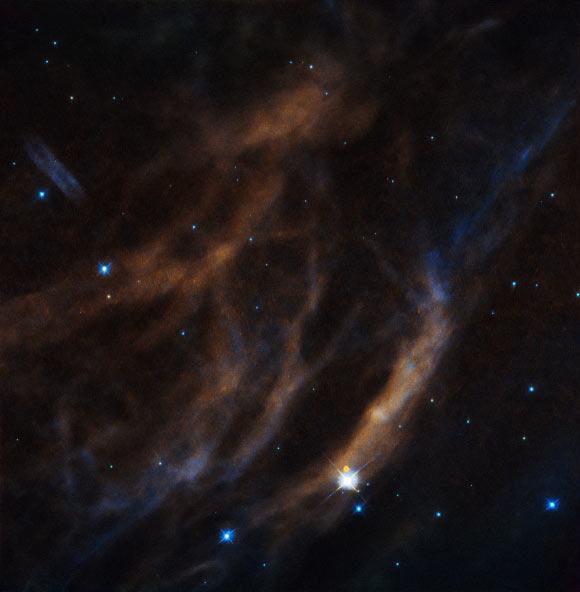A new image taken recently by the NASA/ESA Hubble Space Telescope captured a faint and wispy shell of gas in the constellation of Canis Major.

This Hubble image shows a few of the tenuous threads that comprise Sh2-308. Image credit: NASA / ESA / Hubble.
The object in question, called Sh2-308, is approximately 5,200 light-years from Earth.
Sh2-308 is a bubble-like structure wrapped around a type of star known as a Wolf-Rayet star (this particular star is called EZ Canis Majoris).
These type of stars are among the brightest and most massive stars in the Universe, tens of times more massive than the Sun, and they represent the extremes of stellar evolution.
Thick winds continually poured off the progenitors of such stars, flooding their surroundings and draining the outer layers of the Wolf-Rayet stars.
The fast wind of a Wolf-Rayet star therefore sweeps up the surrounding material to form bubbles of gas.
EZ Canis Majoris is responsible for creating the bubble of Sh2-308 — the star threw off its outer layers to create the strands visible here.
The intense and ongoing radiation from the star pushes the bubble out further and further, blowing it bigger and bigger. Currently the edges of Sh2-308 are some 60 light-years apart.
This image is a composite of separate exposures acquired by Hubble’s Wide Field Camera 3 (WFC3).
Two filters — a blue filter (F502W) and a green filter (F656W) — were used to sample various wavelengths.
The color results from assigning different hues to each monochromatic image associated with an individual filter.







